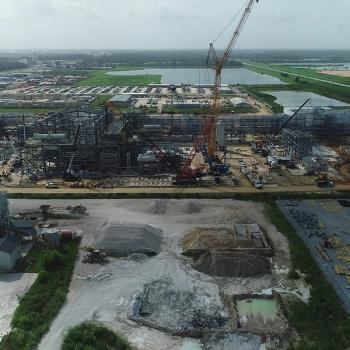
Chevron Receives GHG Assessment Permit Offshore Western Australia
Chevron will hold a 70% participating interest; Woodside Energy will hold a 30% stake; GS Caltex will potentially own a 5% interest upon regulatory approvals.
Chevron Australia New Ventures (Chevron) was granted a greenhouse gas (GHG) assessment permit offshore Onslow, Western Australia. The G-18-AP permit covers an approximate area of 8,467 km2 with water depths of 50 - 1,100 meters. The permitted area will be evaluated as a hub to store third-party emissions, including those from Chevron-operated LNG assets.
“These opportunities have the potential to help us lower the carbon intensity of our own operations as well as provide opportunities to help our customers reduce or offset emissions from their activities,” said Mark Hatfield, Managing Director, Chevron Australia.
The permit includes a joint venture between Chevron—the operator—and Woodside Energy. Chevron will hold a 70% participating interest in G-18-AP, while Woodside will hold a 30% participating interest. Additionally, Chevron agreed to grant 5% of its permit equity to GS Caltex upon the finalization of regulatory approvals and other matters.
“Chevron, along with our joint venture participants, have a set of assets, capabilities, and customer relationships to support the further assessment, development, and deployment of carbon capture and storage (CCS) in Australia,” said Chris Powers, VP of CCUS & Emerging Technologies for Chevron New Energies. “The Chevron-operated Gorgon CCS project, coupled with our existing GHG assessment permits, gives this new award potential to expand Chevron’s portfolio of CCS assets in Australia.”
Chevron’s Oil & Gas News
Earlier this month, Chevron started oil and natural gas production at its deepwater asset in the U.S. Gulf of Mexico—
Development includes seven subsea wells connected to the Anchor FPU, located in the Green Canyon approximately 140 miles offshore Louisiana, in water depths of about 5,000 feet. It is designed as an all-electric facility with electric motors and electronic controls to minimize carbon emissions. In addition, the FPU uses waste heat and vapor recovery units and existing pipelines to transport oil and natural gas to U.S. Gulf Coast markets. The site contains up to 440 million barrels of oil equivalent in estimated recoverable resources.
In April, Chevron’s affiliate,
Throughout the rest of 2024, TCO will start-up additional PBF compressors and convert the remaining metering stations from high pressure to low pressure in the oil gathering system. The last phase of TCO’s Tengiz expansion project is pacing for completion in the first half of 2025, allowing the company to increase Tengiz crude oil production by 12 mtpa—equivalent to 260,000 barrels per day.
Newsletter
Power your knowledge with the latest in turbine technology, engineering advances, and energy solutions—subscribe to Turbomachinery International today.




